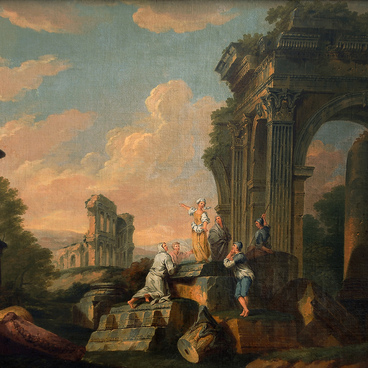“The Musician” entered the collection of the Primorye Art Gallery as allegedly attributed to the artist Francesco Salviati. However, upon thorough research and consultation with the staff of the Italian department of the State Hermitage, it was possible to ascertain the attribution. Actually, “The Musician” can, with high reliability, be attributed to the work of Pier Francesco Foschi, an Italian mannerist artist who worked in Florence.
The canvas displayed in the exposition of the Primorye Museum is a Renaissance portrait. Apparently, the painting depicts a real person. This work of art has features peculiar to mannerism — an artistic trend characterized by the loss of Renaissance harmony between the physical and the spiritual, nature and human.
The term “Mannerism” comes from the Italian word “maniera” (style, manner), which was used by the artist and biographer Giorgio Vasari as early as the 16th century. Modern researchers place this period in the history of visual arts of Europe between the era of the High Renaissance and the Baroque.
Mannerism originated in Rome and Florence in the 1520s, when society was shaken by tragic events: the Reformation, the plague epidemic, and the capture of Rome in 1527 influenced the worldview of artists who abandoned the harmonious perception of the world, the humanistic ideals of the Renaissance in favor of emotionality, which was noticeable in the late works of Michelangelo and Raphael. Formally, this is expressed in pretentiousness, elongated proportions of figures, and soft lines.
Curiously enough, the Pushkin State Museum of Fine Arts has a “Portrait of Cardinal Giovanni Salviati” by Pier Francesco Foschi, previously also attributed to Francesco Salviati. In his portraits, Foschi used slightly contrasting positions of the figure and the head. This pose gave the image a spontaneity and a sense of movement that was novel in the painting of that time and also characterized mannerism. However, Foschi used this position over and over again, so all his portraits look similar.
The canvas displayed in the exposition of the Primorye Museum is a Renaissance portrait. Apparently, the painting depicts a real person. This work of art has features peculiar to mannerism — an artistic trend characterized by the loss of Renaissance harmony between the physical and the spiritual, nature and human.
The term “Mannerism” comes from the Italian word “maniera” (style, manner), which was used by the artist and biographer Giorgio Vasari as early as the 16th century. Modern researchers place this period in the history of visual arts of Europe between the era of the High Renaissance and the Baroque.
Mannerism originated in Rome and Florence in the 1520s, when society was shaken by tragic events: the Reformation, the plague epidemic, and the capture of Rome in 1527 influenced the worldview of artists who abandoned the harmonious perception of the world, the humanistic ideals of the Renaissance in favor of emotionality, which was noticeable in the late works of Michelangelo and Raphael. Formally, this is expressed in pretentiousness, elongated proportions of figures, and soft lines.
Curiously enough, the Pushkin State Museum of Fine Arts has a “Portrait of Cardinal Giovanni Salviati” by Pier Francesco Foschi, previously also attributed to Francesco Salviati. In his portraits, Foschi used slightly contrasting positions of the figure and the head. This pose gave the image a spontaneity and a sense of movement that was novel in the painting of that time and also characterized mannerism. However, Foschi used this position over and over again, so all his portraits look similar.


